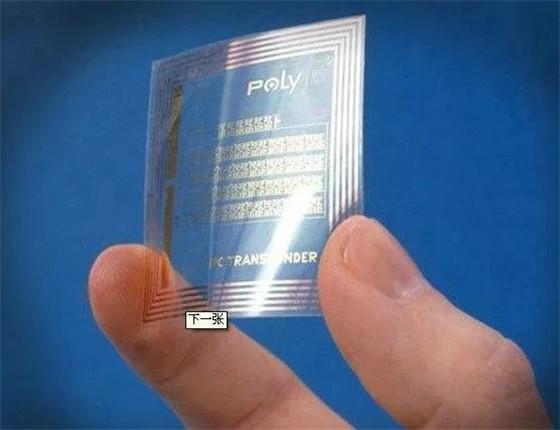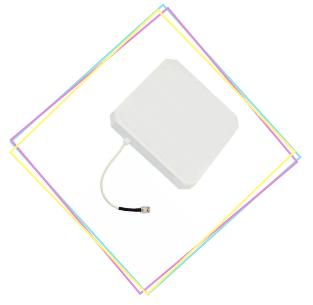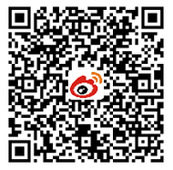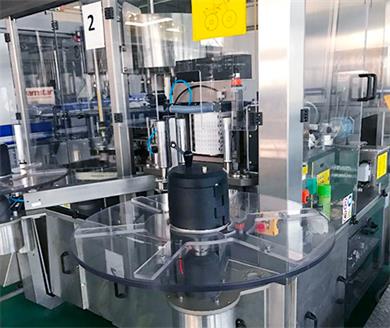RFID technology is not far away from us
Since Amazon opened AmazonGo, the first unattended physical supermarket in the United States, unattended retail stores have become very popular. At that time, retail giants such as Alibaba and JD have joined in. The reason why unmanned supermarket can achieve unmanned, depends on a technology - RFID technology. So what exactly is RFID technology? What are the current applications? Small make up today to explain in detail.
1
detailed explanation RFID technology
Radio frequency identification, RFID (RadioFrequencyIdentification), also known as electronic live radio frequency identification (RFID) tag, etc. RFID technology is a kind of non-contact automatic identification technology, which can automatically identify the target object and obtain the relevant data through the radio frequency signal, identification work without manual intervention, can work in a variety of adverse environment.
In 1948, HarryStockman published "Communicationby Means of ReflectedPower" in the journal of the Instituteof Radio Engineers, which laid the theoretical foundation for RFID technology. This technology began to emerge in the mid-1980s, and with the maturation of lsi technology, the size of rfid system was greatly reduced, so it entered the stage of practical application.
It is reported that RFID technology can tell the moving object and can simultaneously identify multiple tags, fast and convenient operation. Short range rf products are not afraid of oil stains, dust pollution and other harsh environment, can replace the bar code in such an environment. Long - distance rf products are used in traffic, identification distance can be up to tens of meters.
2
The working principle of RFID system
RFID system consists of the following parts:
①electronic tag

Consists of a chip and a tag antenna that communicates with the reader through inductive coupling or electromagnetic backscattering.
②reader-writer

It is the device that reads/writes label information. As the terminal of data collection, the reader also needs to exchange data with middleware.
③ antenna

Is a device that provides radio frequency signal spatial propagation for tags and readers.
④middleware
It is the link between RFID devices and enterprise applications and the core of RFID application system.
The working principle of RFID system is as follows:
Readers are going to send information, after encoding the load at a particular frequency carrier signal sent by the antenna to the outside, on entering the reader work area electronic tag receives the pulse signal, the chip inside of the card on this signal modulation circuit, decoding, decryption, and then to command request, password, permission, etc. If it is to read the command, the control logic circuit will read the relevant information from the memory, and send it to the reader through the antenna in the card after encryption, encoding and modulation. The reader will demodulate, decode and decrypt the received signal and send it to the central information system for relevant data processing. If to modify the information of the write command, the control logic caused by the internal charge pump to raise the working voltage, to provide erase eep-rom content to rewrite, if the corresponding password and permissions are not determined, return error message.
3
The advantage of RFID smart label is also known as radio frequency identification tag, it is the field of high-tech tag products, now has played an important role in product packaging, will gradually replace the traditional product label and bar code. Smart label is a new star in the field of label, it has the function beyond the traditional label, is the crystallization of electronic and computer technology in label printing. RFID tag is a kind of smart tag. The table below compares RFID tags with magnetic CARDS, IC CARDS, and traditional bar codes and other contemporary or early automatic identification technologies.
By comparing RFID with other systems, the advantages of RFID technology can be obtained as follows:
fast scan
RFID readers can read multiple RFID tags at the same time, whereas barcodes can only be scanned one at a time.
Penetrability and non-barrier reading
When covered, RFID is able to penetrate non-metallic or non-transparent materials such as paper, wood and plastic, and is able to communicate penetrably. A bar code scanner must be close enough to read a bar code without an object blocking it. And the reason why "unmanned retail store" can achieve no cashier, is mainly the use of RFID technology this feature.
The memory capacity of data is large
The capacity of one-dimensional bar code is about 30 characters, the maximum capacity of two-dimensional bar code can store 2 to 3000 characters, and the maximum capacity of RFID is several megabytes of characters. With the development of memory carrier, the data capacity is also expanding.
Small size, shape diversification
RFID is not limited by size and shape in reading. It does not need to match the fixed size and printing quality of the paper for reading accuracy. Unlike bar codes, it is easy to produce deformation and damage and other problems that lead to unidentification. In addition, RFID tags can be further miniaturized and diversified to apply to different products.
4
RFID technology in the real world ten main applications
In fact, RFID technology is not far away from us in reality. Currently, the main application of xiaozhijun summarizes ten categories, which are as follows:
Highway tolls and intelligent transportation system 01 highway automatic tolls system is one of the most successful applications of rfid technology. The advantages of REID technology can be fully demonstrated in the application of autotoll on highways. At the same time when the vehicle passes through the toll station at high speed, the toll payment is automatically completed, which solves the bottleneck problem of the traffic, improves the speed of the vehicle, avoids the congestion, improves the calculation efficiency of the toll, and solves the problem of the toll collected by the toll collector corruptly.
Production automation and process control 02RFID technology has a lot of applications in production process control due to its strong resistance to harsh environment, non-contact identification and other characteristics. Through the use of RFID technology in the automatic assembly line of large factories, the material tracking and automatic control and monitoring of the production process are realized, the production efficiency is improved, the production mode is improved and the cost is reduced.
Automatic identification and anti-theft of vehicles 03 rfid technology can be used for real-time monitoring, statistics and scheduling of road traffic flow, but also can be used for record and alarm of vehicles running red lights, alarm and tracking of stolen (suspicious) vehicles, tracking of special vehicles, and troubleshooting of hit-and-run vehicles. Britain plans to install radiofrequency chips in cars to automatically report speeding, it has been reported.
One of the most promising areas for rfid systems, particularly non-contact IC CARDS (e-tags), is public transport. Using e-tag as e-ticket has the advantages of convenient use, shorter transaction time and lower operation cost.
Cargo tracking management and monitoring 05 rfid technology for cargo tracking management and monitoring provides a convenient, fast and accurate automated technology means. With rfid technology as the core, container automatic identification has become the largest cargo tracking management application in the world. Electronic tags that record the container's location, type of items, quantity and other data are mounted on the container, and rfid technology is used to determine the exact location of the container in the yard. The system can also identify unauthorized container movement, which facilitates management and security.
Storage, distribution and other logistics links 06 rfid system for intelligent warehouse goods management, can effectively solve the warehouse and the flow of goods related information management, monitoring the information of goods, real-time understanding of inventory, automatic identification of goods, determine the location of goods.
The automatic sorting system of mail and parcel 07 rfid technology has been successfully applied in the automatic sorting system of parcel in the postal field. The system has the characteristics of non-contact and non-line of sight data transmission, so the directional problem of parcel can be ignored in the delivery of parcel. In addition, when multiple targets enter the identification area at the same time, they can be identified simultaneously, which greatly improves the cargo sorting capacity and processing speed. In addition, the electronic tag can record all the characteristics of the package, which is more conducive to improving the accuracy of package sorting.
Animal tracking and management 08 rfid technology can be used for animal tracking and management. The electronic tag sealed with small glass is planted under the skin of animals, which can identify livestock, monitor animal health and other important information, and provide reliable technical means for the modernization of pasture management. In large farms, rfid technology can be used to establish feeding files, vaccination files, and so on, to achieve the purpose of efficient and automatic management of livestock, while providing security for food safety.
Future access control security system can be used electronic tags, a card can be multi-purpose, such as work permits, entry permits, parking permits, hotel accommodation permits and even tourist passports. The use of electronic tags can effectively identify the identity of personnel, conduct security management and efficient collection, simplify access procedures, improve work efficiency, and effectively carry out security protection. The system automatically identifies people when they come in and out and alerts the police when they break in. Where security is high, fingerprints, palm prints or facial features can be combined with other identification methods and stored on electronic tags.
Forgery problem in the world is a headache, now the application of anti-counterfeiting technology such as holographic anti-counterfeiting will also be forged by criminals. The application of rfid technology in the field of anti-counterfeiting has its own technical advantages, it has the advantages of low cost and difficult to forge. The cost of electronic tags is relatively cheap, and the need for expensive factories to make chips discourays counterfeiters. The electronic tag itself has memory, which can store and modify the data related to the product. Using this technology does not need to change the current data management system, the unique product identification number can be completely compatible with the used database system.
RFID technology application is a powerful black technology, since 2000, has been on the rise. Data shows that the production of RFID tags in 2013 reached 330 billion yuan, more than 25 times the output of 1.3 billion yuan in 2005. This shows that the application of RFID technology is in a high-speed development stage. As technology improves and costs and prices fall, the potential is huge and the prospect is very attractive.
- Impinj unlocks new IoT device opportunities with launch advanced RAIN RFID chips
- RFID is Improving the World of Healthcare
- Confidex Ferrowave Micro Delivers On-Metal RFID Tracking for Specialty Retail
- Paragon ID announces the acquisition of Security Label, European leader and one of the world's bigge















